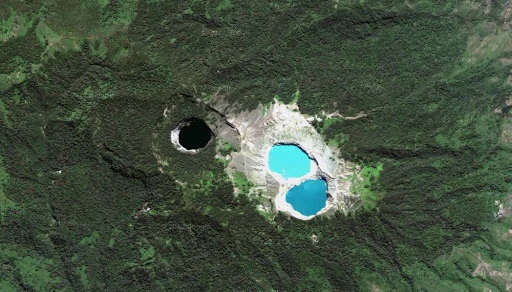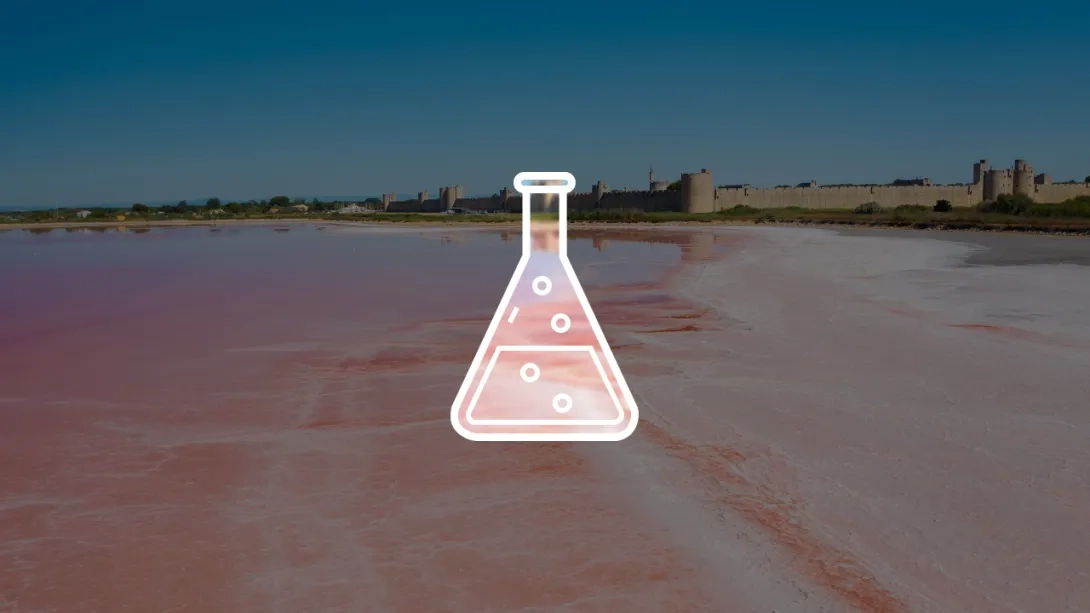The color of water is one of the parameters that can be assessed visually. This applies to both water from centralized water supply systems and water from wells and boreholes. Evaluating water color, along with taste and odor, is essential for determining water quality. Today, we will discuss what may cause the color of tap water and why some bodies of water are tinted in particular shades.
What affects the color of water?
Presence of certain impurities:
Mineral salts of iron, manganese, and other metals can impart color to water. Depending on their concentration, colors may vary.Microorganisms living in water:
Some microorganisms have their own pigmentation and can color the water in different shades.Solar activity:
Sunlight is the primary reason for the blue color of water.Depth of water bodies and their bottom composition:
The depth and the nature of the bottom can significantly influence the perceived color.
Yellow water
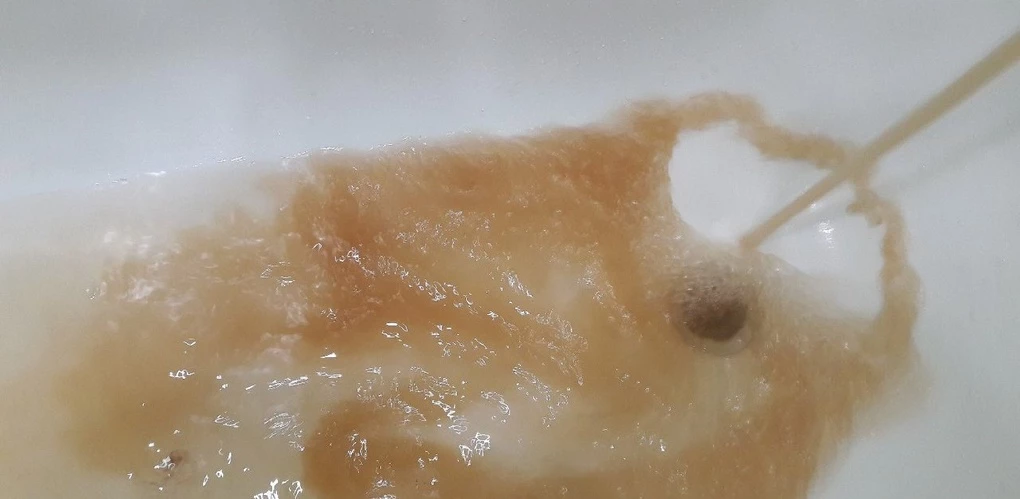
The main reason for a yellowish tint in water is dissolved iron. This can be observed when water initially pumped from a borehole appears clear but turns yellow after contact with air. If the iron content is too high, rusty flakes may even become visible. In tap water, iron contamination can also come from pipelines, especially after water supply interruptions, where the first flows of water may appear orange or cloudy.
Another cause of yellow water can be humic substances from surface water sources that are not fully decomposed during centralized treatment.
Green water
Green-colored water in natural reservoirs is most likely due to the development of blue-green algae. When water bodies become polluted, these algae start to multiply actively due to the presence of biogenic elements in wastewater, leading to a phenomenon called “eutrophication.”
For example, the Dnipro River in Ukraine often turns green during the summer months when conditions are optimal for algae growth.
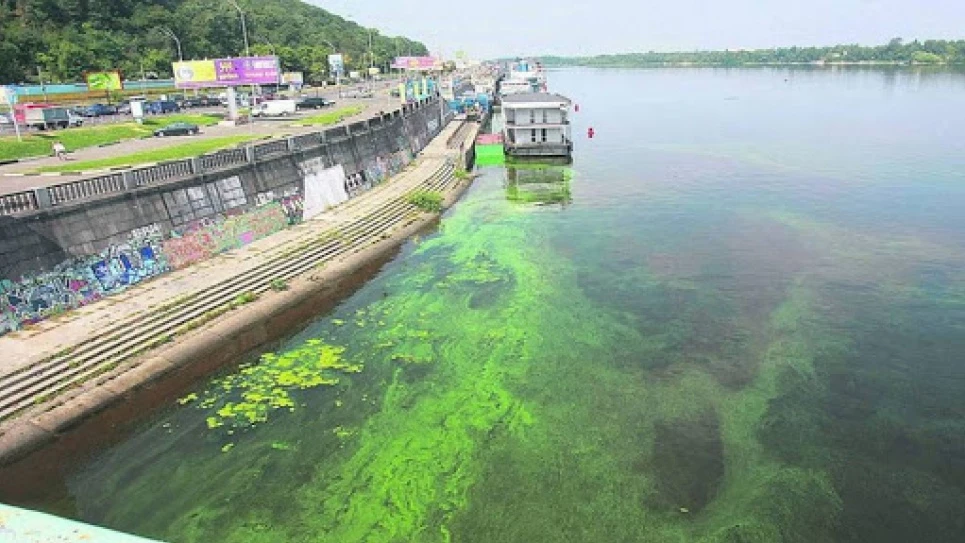
Brown and red water
The brown color of water is often due to biological processes, such as organic decay in swamps. Sometimes, mineral salts like iron compounds also contribute to the color. An illustrative example is the artificial salt ponds in San Francisco (USA), where various colonies of microorganisms help in the salt extraction process, creating shades ranging from green to vibrant red.
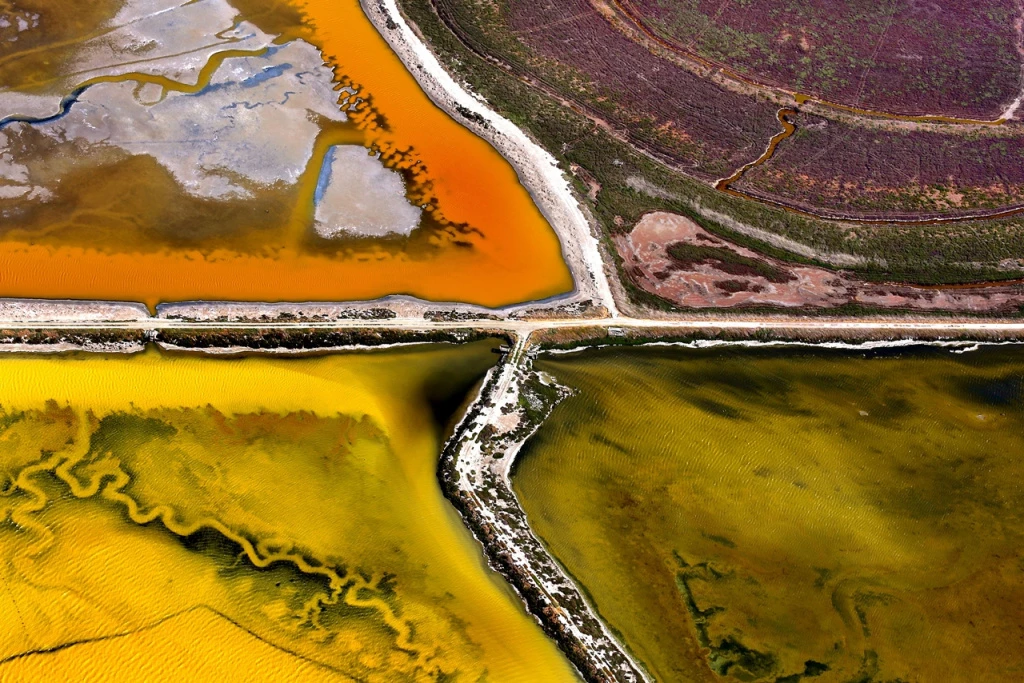
Another famous example is the Pink Lake in Kherson, Ukraine, colored by a microorganism called Dunaliella salina.
Similarly, the “Blood Pond” in Japan has a deep red hue due to iron salts and the proximity to a volcano, which raises the water temperature to around 90°C.
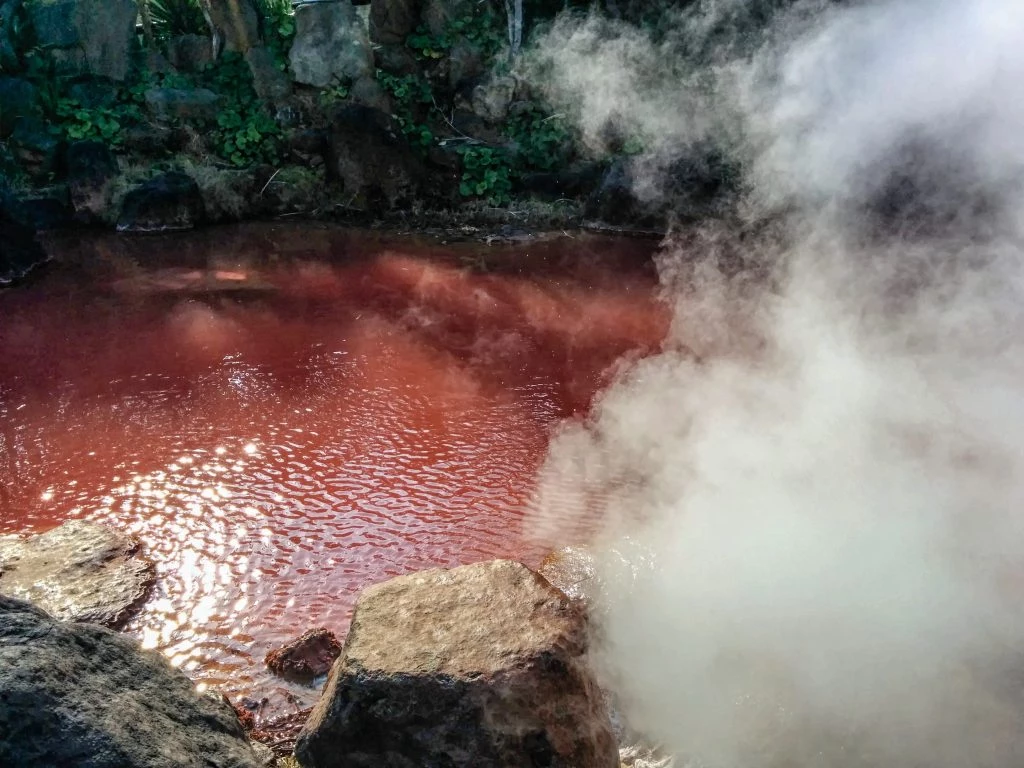
White water
Milky-white water can have two origins:
Dissolved oxygen:
Rapidly moving water in mountain rivers or waterfalls becomes saturated with tiny air bubbles, giving it a white appearance. Similarly, reverse osmosis systems may produce slightly cloudy water during initial use or when there is a significant temperature difference between the water and the environment.Industrial wastewater contamination:
Industrial effluents may contain large amounts of suspended white substances, making the water appear turbid.
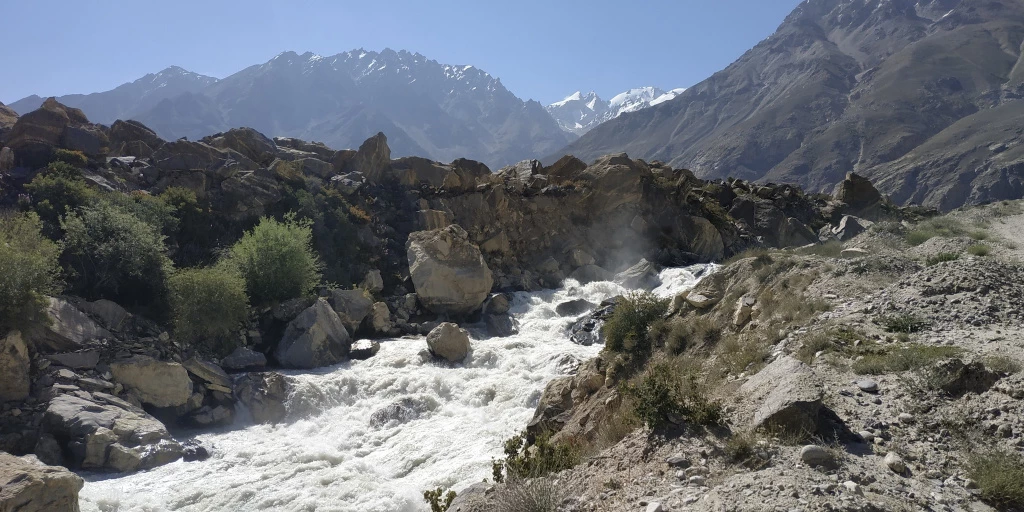
Why does water color change depending on time and weather conditions?
The blue and cyan hues of water are caused by reflections of the sky. During sunset, the same water that appeared blue may take on a red or even black tone. Stormy weather can turn the water gray and unattractive as the sky darkens.
Optical effects also explain why the saturation of water color changes with the depth of the body of water.

What’s on the bottom?
The bottom layer of rivers, lakes, and seas also significantly influences the surface color. A lakebed covered with algae will naturally appear darker, while light-colored limestone or sandy bottoms make the water look bright blue.
A vivid example of how the bottom affects water color is the three adjacent lakes on Mount Kelimutu in Indonesia, each with a distinct color despite being next to one another.
